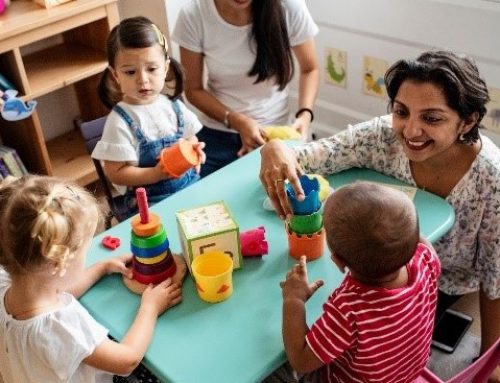High-quality child care plays a crucial role in a child’s development, providing a nurturing and stimulating environment that promotes their overall well-being. It is essential for parents and caregivers to understand what constitutes high-quality child care to make informed decisions about their child’s early education. In this article, we will explore the key characteristics that define high-quality child care and its significance in a child’s growth and development.
Qualified and Responsive Caregivers:
One of the primary indicators of high-quality child care is the presence of qualified and responsive caregivers. These professionals have the necessary training and qualifications to meet the developmental and emotional needs of young children. They exhibit warmth, patience, and genuine interest in each child, forming secure attachments that contribute to a child’s overall sense of security and self-esteem.
Safe and Stimulating Environment:
A high-quality child care setting prioritizes safety and provides a stimulating environment conducive to a child’s growth and development. It includes childproofed spaces, adequate supervision, and appropriate safety measures to ensure children’s physical well-being. Furthermore, a stimulating environment offers age-appropriate toys, books, and activities that promote exploration, creativity, and learning.

Age-Appropriate Curriculum:
High-quality child care centers implement age-appropriate curriculum and activities that align with a child’s developmental stage. These curricula encompass a range of domains, including social, emotional, cognitive, and physical development. Caregivers understand the importance of play-based learning and incorporate structured activities, such as storytelling, arts and crafts, and outdoor play, to support children’s holistic development.
Strong Parent-Caregiver Communication:
Effective communication between parents and caregivers is a hallmark of high-quality child care. Providers ensure open and regular communication channels to keep parents informed about their child’s daily activities, progress, and any concerns that may arise. Regular parent-teacher meetings, newsletters, and digital platforms help foster a collaborative partnership between parents and caregivers, enabling them to work together in the best interests of the child.
Individualized Attention:
High-quality child care recognizes the unique needs of each child and provides individualized attention. Caregivers observe and assess a child’s interests, strengths, and areas for growth, tailoring their approach accordingly. By recognizing and responding to a child’s individuality, caregivers create an environment that supports their social, emotional, and cognitive development.
Healthy Meals and Snacks:
Nutrition is an integral part of high-quality child care. Child care centers prioritize providing healthy meals and snacks that meet the nutritional requirements of young children. They follow recommended dietary guidelines, accommodate specific dietary needs or restrictions, and encourage good eating habits. A balanced and nutritious diet supports a child’s overall growth, energy levels, and cognitive functioning.
Continuous Professional Development:
To ensure the provision of high-quality child care, caregivers engage in continuous professional development. They participate in relevant training programs, workshops, and conferences to stay updated on best practices and new research in early childhood education. Ongoing professional development enables caregivers to enhance their skills, knowledge, and understanding of child development, fostering a higher standard of care.
Conclusion:
High-quality child care is essential for a child’s overall development and lays the foundation for future success, with us at Back To Basic Kids you can achieve. By encompassing qualified and responsive caregivers, safe and stimulating environments, age-appropriate curricula, strong parent-caregiver communication, individualized attention, healthy meals, and continuous professional development, high-quality child care centers create an environment that promotes holistic growth and well-being. Choosing a child care center that embodies these characteristics ensures that children receive the care and support they need during their formative years.






